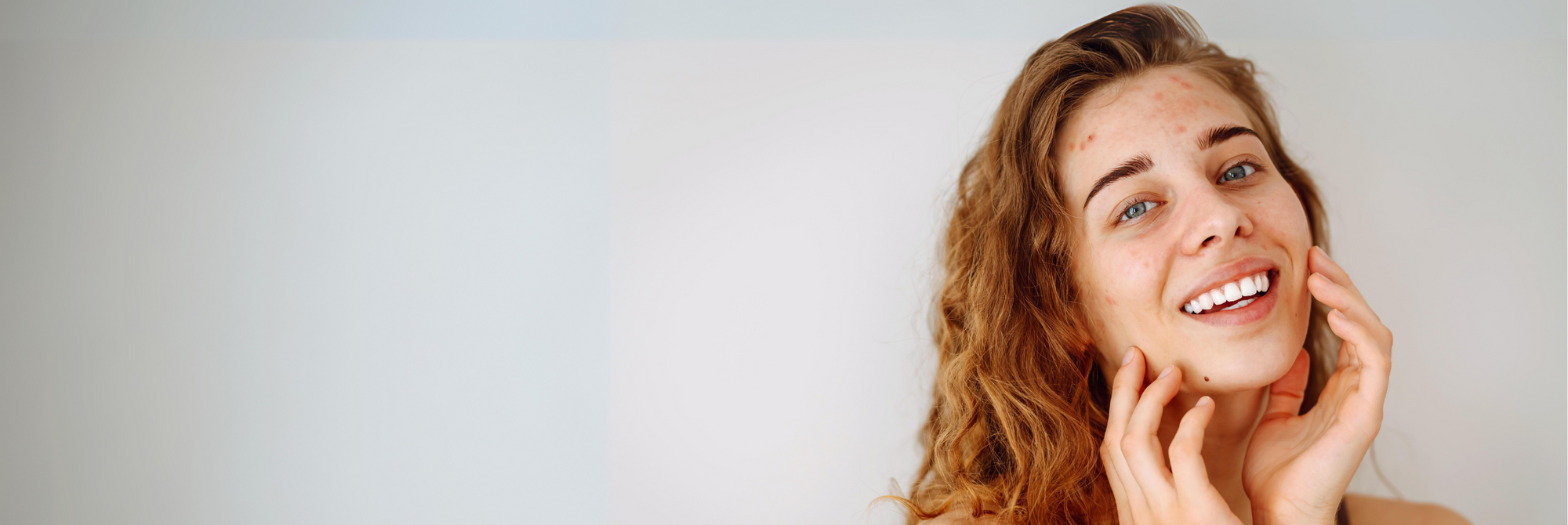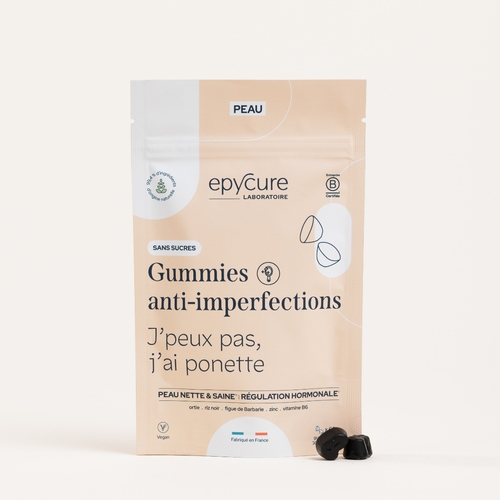Skin problems can be the source of many complexes . Among all, acne impacts the greatest number, affecting approximately 80% of adolescents, 15-20% of whom suffer from a severe form . It is one of the most widespread skin diseases and unfortunately takes different forms depending on its cause, with varying severity.
Acne, enemy number 1
It is an inflammatory skin disease with multiple factors impacting the sebaceous glands , which produce sebum, in the skin, with a slight predominance on the face. This disorder causes excess sebum , leading to the appearance of pimples, cysts, comedones, oily skin, dilated pores and subsequently, scars and marks, not to mention the psychological impact and self-esteem.
Generally speaking, acne is hormonal because it's caused by fluctuations in androgen hormones that increase sebum secretion. But that's not all! Other factors come into play, which is why there are different types of acne, some more severe than others. We'll explain everything.
The different types of acne
Retentional acne
This is the first stage of acne in teenagers . Initially, small open or closed comedones appear, often called blackheads and whiteheads , and microcysts, which give the skin a grainy appearance . It is the cause of hyperseborrhea but also the abundance of keratin cells in our skin, and can be the cause of several factors: hormonal (puberty, pregnancy, periods, etc.), stress, heredity, smoking.
For the lucky ones, it stops at this stage, for others, the retentional acne becomes inflammatory causing new blemishes to appear.
Inflammatory acne
Inflammation is dependent on sebum and bacteria in the skin; as with everything else, excess is the cause. The microcysts become inflamed, and at this point, we begin to see red spots appear on the skin: these are superficial papules and pustules.
Without treatment, whether medical or simply by adapting one's lifestyle , the retentional lesions will worsen and go deeper into the skin, and nodules will then appear. Unfortunately, at this stage, if the inflammation persists, the skin will have more and more difficulty repairing itself, which is where the risk of scarring is greatest .
In the vast majority of cases, it is teenagers who are affected by this type of acne because of the many hormonal upheavals, but not only! Due to an unbalanced diet , hormonal variations and stress, adults are also affected by inflammatory acne, and more particularly women.
Combination acne
As the name suggests, this type of acne presents both retentional and inflammatory lesions depending on the part of the body affected. It can be associated with external factors such as the use of skin products , sun exposure or even medication .
Its severity depends on many factors; several subtypes of acne coexist, among them:
-
Cystic acne
This is the most severe form of acne . More common in boys, this type of acne presents with deep lesions and infections all over the body, in the form of cysts and nodules that are often very painful and can rupture.
-
Baby acne
This is a transient acne . Due to the withdrawal of maternal hormones, strong hormonal stimulation causes the appearance of comedones and papules on the child's cheeks and forehead. It usually appears from birth and lasts one to three months.
-
Cosmetic acne
Using cosmetics (makeup, creams, etc.) that are not suited to your skin type can worsen existing acne . While trying hard to hide it, simple acne retention can become inflammatory.
-
Acne conglobata
This is a progressive form of acne. Beginning in adolescence and potentially persisting into adulthood, it is characterized by a combination of large comedones, nodules , and abscesses that can resemble warts.
Their treatment will differ depending on the type of acne, sometimes simple antibiotics can be enough but in the case of more serious forms, medications can help treat it (isotretinoin, benzoyl peroxide, etc.). However, they can also have harmful effects on your skin such as the appearance of redness, atopic eczema or even a worsening of your acne. This is why it is essential to consult a doctor or dermatologist so that they can give you the steps to follow.
Getting rid of acne can sometimes be complicated. We'll give you all the answers in this article: How to get rid of hormonal acne?



